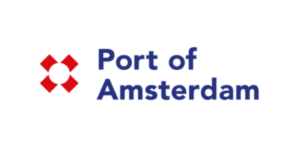Starting in 2030, the European Alternative Fuel Infrastructure Regulation (AFIR) will require European ports to provide shore power to AFIR-class vessels, including cruise ships. To meet this obligation, a 30 MVA power cable is being installed from the Papaverweg substation to the Passenger Terminal Amsterdam (PTA). At the quay, an Energy Hub with a contracted capacity of 20 MW will be established. This non-redundant connection is scheduled to be operational in Q1 2025.
The estimated shore power demand for an ocean cruise ship ranges from 8 to 12 MW, while river cruise ships require approximately 5 to 6 MW, supported by 16 powerlock connections (400V, 400A), with each ship using two. Because the Energy Hub’s capacity exceeds the expected demand, there will be surplus power—especially when no cruise ships are docked. The hub will feature seven outgoing feeders, which can be configured for alternative uses beyond supplying shore power. The owner of the PTA, the Port of Amsterdam (PoA), was eager to the discover different options to share the excess power.


In February 2023 Cenex Nederland, in cooperation with ROCC, carried out a quick scan to assess the feasibility of establishing a Closed Distribution System (GDS) and analysed the potential for installing charging infrastructure for parking garages and fast chargers for taxis and coaches. The study revealed that it is possible to supply charging infrastructure with energy from outside the PTA’s property boundary .
Goals
This led to a follow-up deep dive into the preconditions of the GDS, market opportunities, exploitation variants and potential business cases. The irregularity of the power available to share limits the number of potential value propositions. The research explores potential value propositions across the following four focus areas:
- Charging demand for waterborne transport
- Charging demand for battery storage
- Charging demand for road transport
- Facilitating a (fast) charging hub in public space
The most promising value proposition is then further analysed by performing a business case analysis. This includes evaluating potential revenues, investment costs, operational feasibility, and scalability to determine its long-term viability and impact.
Results
The decision to establish a GDS is a logical one: not all locations around the PTA are situated on the same cadastral (WOZ) parcel. By implementing a GDS, the PoA is permitted to extend its cables to a nearby WOZ parcel surrounding the PTA.
Charging demand for road transport emerged as the strongest value proposition. Installing charging infrastructure for various types of vehicles presents a highly attractive value proposition, especially when multiple vehicle categories can share the same charging facilities. Moreover, the deployment of fast-charging infrastructure has the potential to actively stimulate demand.
Operating the charging infrastructure under an ownership model—where the PoA both owns and manages the system—offers the strongest business case. It also provides stability during the initial phase, when agreements with the first market participants must be established, making it advantageous for the PoA to take the lead and retain control.

